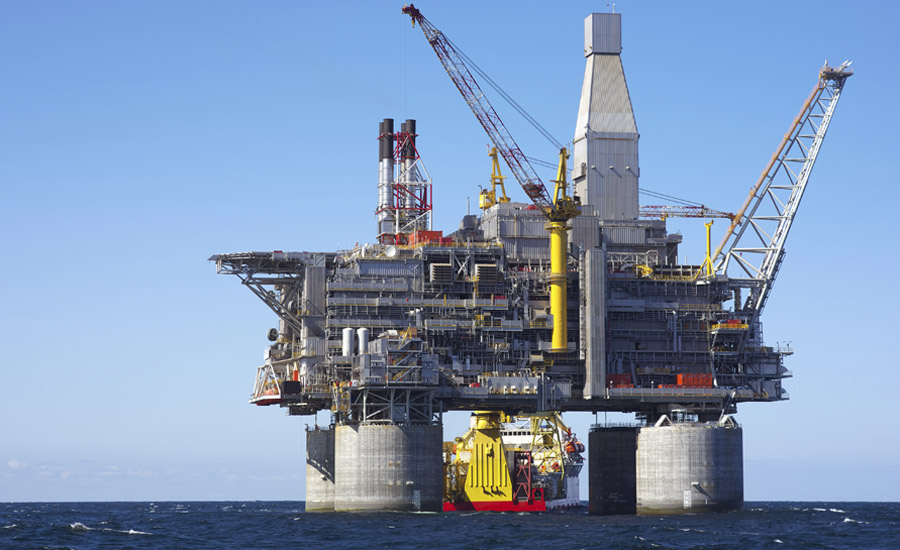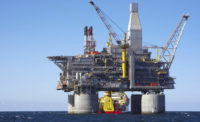The recent flood of hundreds of new rigs, boats and barges came with an equally big flood of new rig managers, many of whom lacked the experience and self-confidence to fight the safety fascists- a weakness which is costing offshore contractors millions in otherwise avoidable asset inspections and service charges, according to OilPro (http://oilpro.com) the oil and gas upstream exploration and production portal.
As an experiment, a couple of weeks ago a query was posted to Oilpro.com asking how contractors are servicing a critical but mechanically simple rig hoisting component, i.e. "What should be done at the five year service on crown blocks?
Some of the answers given to this question illustrate the grim hold of safety dogmatism over the drilling industry, according to the OilPro post.
The basic design philosophy of rig hoisting equipment was settled upon more than a century ago. Rotary rigs are based on massive over engineering, especially that of hoisting equipment used in the load path. A rotary drilling rig is American technical prowess at its finest. In the case of crown and travelling blocks, simple tests and visual inspections have served for a century to confirm that hoisting equipment is safe to use. Wire rope and roller bearings are well oversized for their application; they are meant to fail progressively, not suddenly; they give off signs that tell the observant user that they are about to break, well before they break.
The American Petroleum Institute (API) Recommended Practice 8B states that:
"Equipment shall be: Disassembled in a suitably equipped facility to the extent necessary to permit full inspection of all primary load carrying components and other components that are critical to the equipment."
This overlooks that a competent rig mechanic can safely and efficiently dismantle and inspect the crown sheeves right there in the derrick and the travelling blocks right there on the rig floor. It also overlooks the design intent, that water tables come with a gin pole expressly intended to allow crown block clusters to be dismantled insitu, according to OilPro.
There was a time when rig crews used to track wear of the fast line sheave grooves (as well as bearing free play) knowing that when wear was reaching its limits, they would plan a sheave swap for the time a new drilling line had to be installed. After dereeving the old drill line, the crown block's sheaves can be dismantled and MPI'd (not all that hard to do, as sheave bearings are a simple slip fit on the shaft). Swap the worn fast line sheaves with the lazy ones at the dead end of the cluster. Send any sheaves with any bearings or seals that need changing, to be pressed out at the mechanic's workbench . (Usually only a few need changing).
Rigs on which such procedures are done may have been drilling for years – this is well-engineered equipment which lasts for decades.
Could the newer rig load path hoisting machinery be more flimsy and prone to sudden breakage than the old stuff? Is there an increase in the number of bad incidents in recent hoisting equipment incident reports?
There is something odd about this relatively recent trend to over-inspect rig equipment.
Some offshore contractors have even taken to removing perfectly good crown and travelling blocks and sending them as a compete assembly to outside workshops for a Cat IV inspection. The expense can exceed six figures. A big bill to what end? One or two new bearings, some new oil seals, a coat of paint and an API monogrammed inspection report? In today's business environment, how long can offshore contractors afford to pay these kinds of prices?
Why is there not a big fuss about companies who run cars or trucks for 10 - 15 years without inspecting wheel bearings?
After all, if a wheel falls off a truck, it could crush some innocents in a passing car.
Hoisting equipment is just one example of the need for a more mature approach to critical systems, where the contractor himself acknowledges that he has a responsibility to monitor and maintain his own equipment. He needs people who are skilled in these systems and who are motivated to share their knowledge. Getting in third parties to inspect and repair company assets should be considered as an expensive last resort. (This raises the matter of OEMs who use tricks such as PLC passwords to "lock in" owners to expensive service contracts - a topic for another day.)
When barges or rigs are idle, cash in the bank takes on a different priority, as contractors look at what they need to do to survive a downturn of unknown duration. Two new priorities include how to use limited cash to maintain the integrity of mothballed assets and how to keep stacked assets as "drill ready" or "work ready" as possible. There is a need to understand what technologies could help the industry "think outside the box" such as adopting inspection and preservation practices from other industries. The goal is to keep our idle assets in good working condition, without excessively spending down our cash reserves.
Today’s offshore contractors are in a race against time to stop a rising flood of red ink, to carefully use what remains of cash reserves to:
- Preserve idle assets in contract ready condition; and
- Be seen complying with as many mandatory 6, 12 , 24 and 60 monthly routine tests and inspections as crew levels and mothball budgets allow.
Mindsets must adapt to new circumstances.
Source: Evan Jones, posted on OilPro http://oilpro.com
Oilpro provides the oild and gas industry with access to a variety of resources and tools:
- Q&A forums (questions and answers covering a variety of industry topics);
- Posts (blogs and other informational material);
- News, analysis, and reports (both original content and links to 3rd party sites);
- Specific product information (posts, Q&A, and links to 3rd party sites);
- Online communities, such as profiles, professional networks, user groups, or other communication tools; and
- A variety of other services

